Szechenyi Bath
- Address: H-1146 Budapest, Állatkerti krt. 11.
- Tags:
 What to see Budapest,
Budapest,
Hungary
What to see Budapest,
Budapest,
Hungary
Szechenyi Bath
For me Szechenyi Bath was the most incredible thing to see and check out in Budapest.
Besides going out and partying this was the place where I went the most to relax.
The bath offers a lot of stuff.
From swimming pools, outdoor and indoor thermal baths, saunas, you just HAVE TO visit it and see it yourself.
Go to google images and you will see how it looks like.
I can just tell, it's even better than on images!
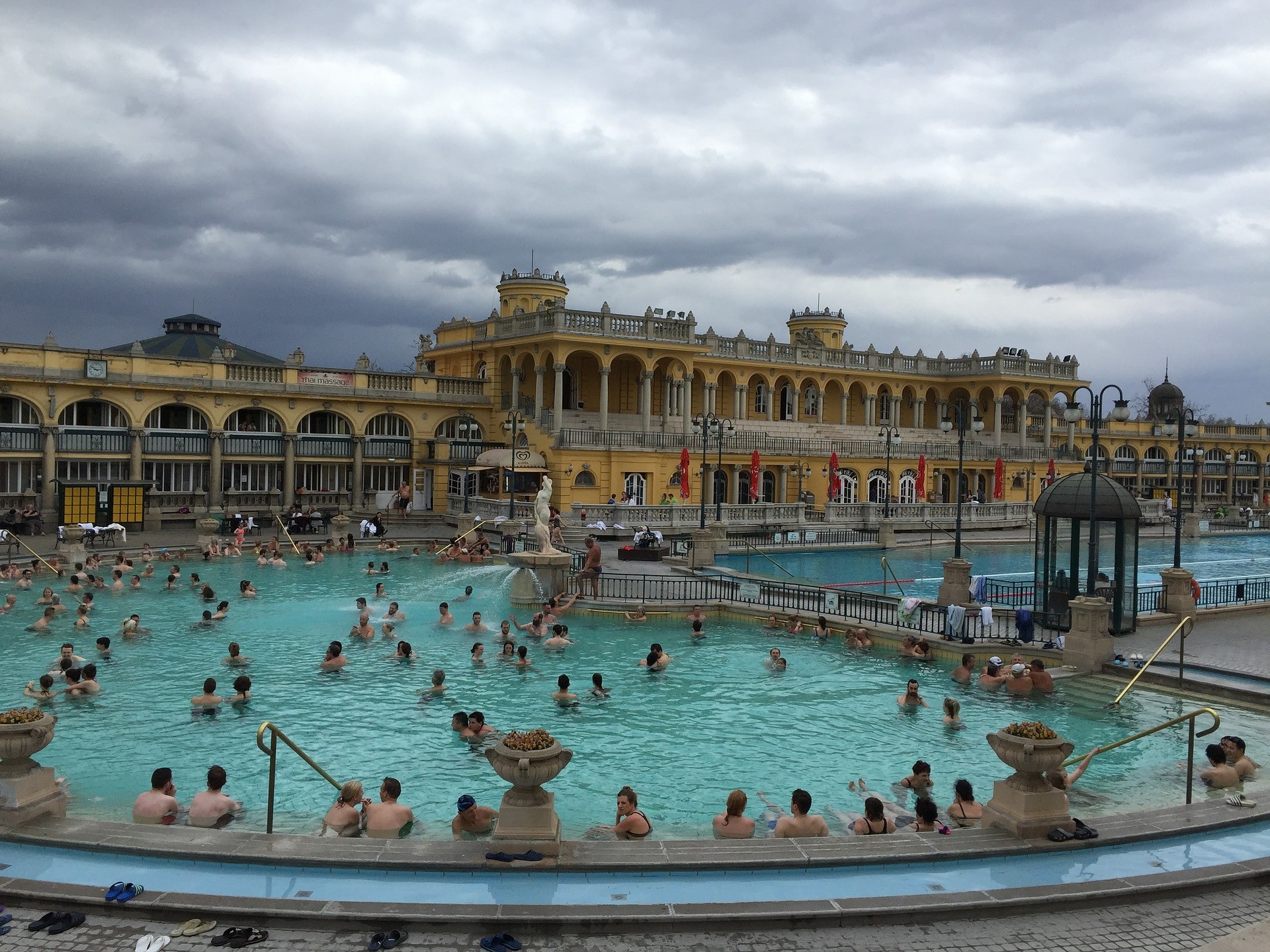
Photo gallery
Content available in other languages
- Español: Baños Szechenyi
Most famous bath
This is the most famous bath in Budapest. I think that it was good but I expected more. The bath is near the Heroes Square, in the middle of the biggest park in Budapest.
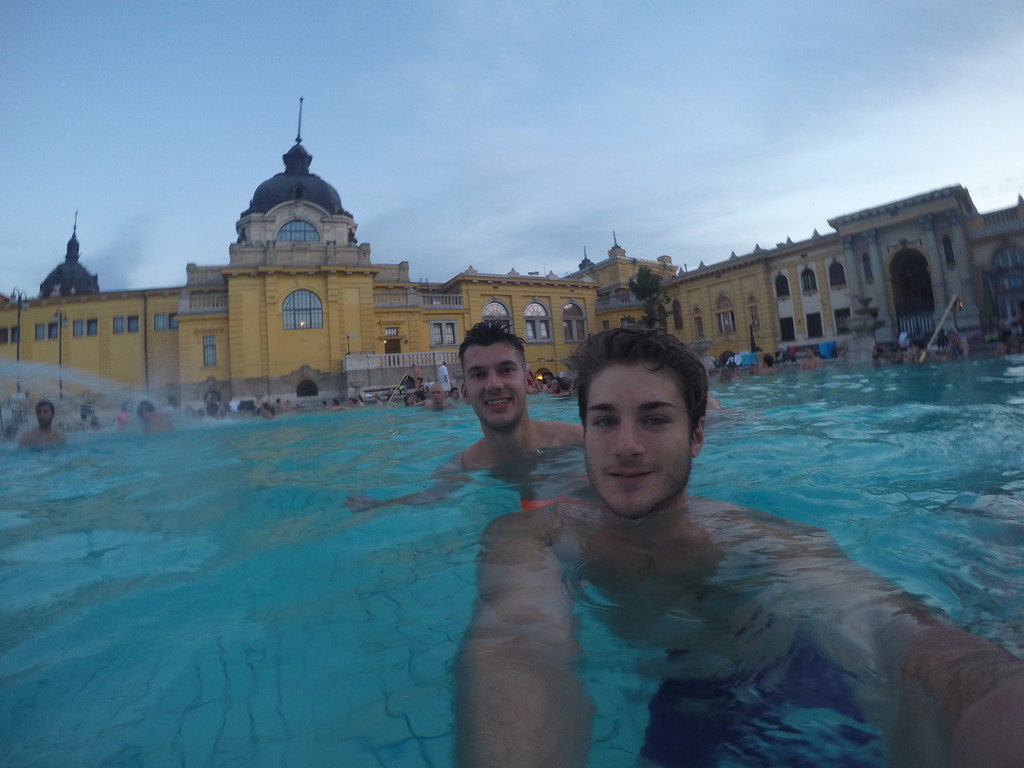
The building is yellow and someone told me it is the biggest in Europe (not sure about it). It was made in the XX century but it doesn't seem old.

There are 3 pools outside: one to swim, one very hot and another in which there are some currents.
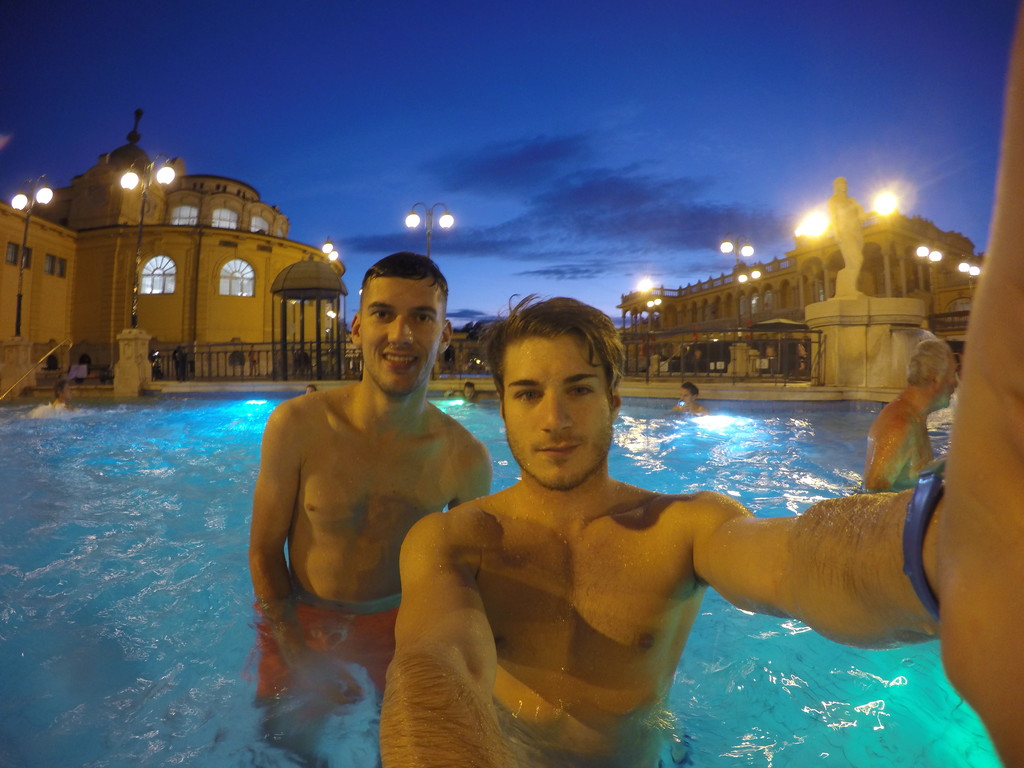
The price is quite high but it's lower than in Italy. I paid 15 euros to go in.
Hungarian people say that is better to go there when it's cold and with the snow. I can suggest to go there during the sunset it's amazing. There are also some parties there but they are very expensive, like 35€. But I have never been there.

Photo gallery
Content available in other languages
- Español: El baño más famoso
Széchenyi thermal baths in Budapest
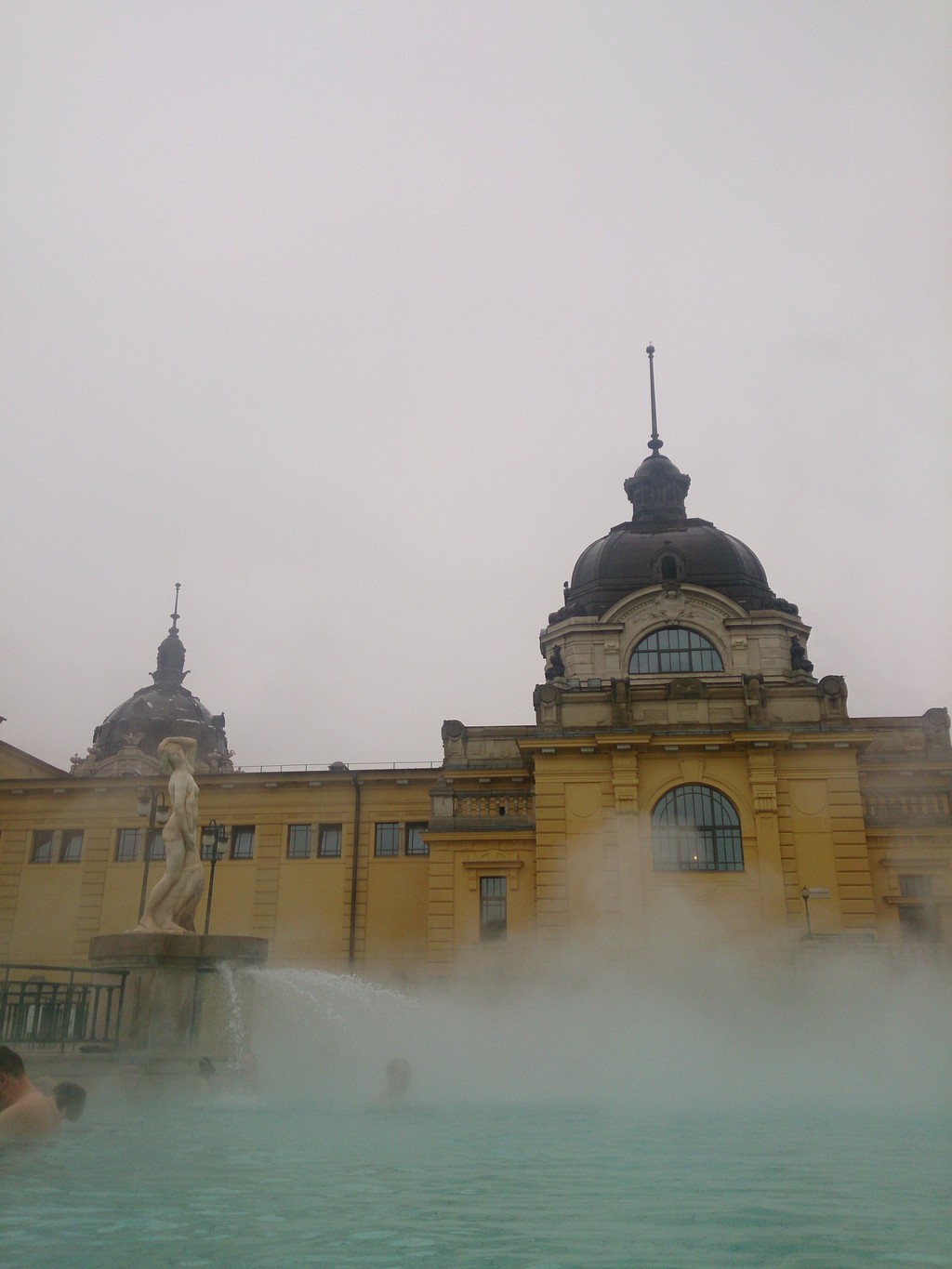
The trip to the baths is practically the most "must-do" visit in Budapest. Budapest is known as "the city of baths" since 1934. Hungary is the land of thermal springs and its capital continues to be the only one in the world that is rich in thermal waters with healing properties.
Budapest is also one of the few places where you are able to enjoy the experience of the traditional Turkish baths that date back to the 16th and 17th centuries, some of the most well-known are Rudas, Király and Veli Bej.
Many of these baths also have open air swimming pools and other spas that are found inside the hotel resorts around the city. Thus the offer of this type of healing leisure is wide-spread and there is no excuse to not spend a morning or a nice evening in the hot thermal waters whilst there are polar like temperatures outside.
Thanks to a unique geological formation, Budapest sits on top of more than 100 thermal springs, so in general, they have one or two main pools and various small pools with different temperatures, many of the baths also have normal pools and open air pools. However, the thermal baths in Budapest offer something more than just the pools, there are saunas, vapour baths, aroma rooms, massage rooms as well as health professionals who offer physiotherapy and water-therapy. It's highly recommended for those who have health problems, but not necessary to be able to get the most out of the experience and appreciate the relaxing Hungarian waters.
When you go into the baths, each one offers the visitors an electronic wristband made of impermeable plastic that allows access to a cabin or locker and all the interior and exterior installations.
In the 19th century, there were advances in medical science which laid the way for a rise in the baths culture, spas such as Gellért, Lukács and Széchenyi are evidence of the rebirth in popularity. Furthermore, their installations and their expansion of services are constantly being remodelled and modernised such as the foot massage by fish. These baths are rich in minerals, with healing powers for illnesses such as rheumatic pains, arthritis and muscular pains.
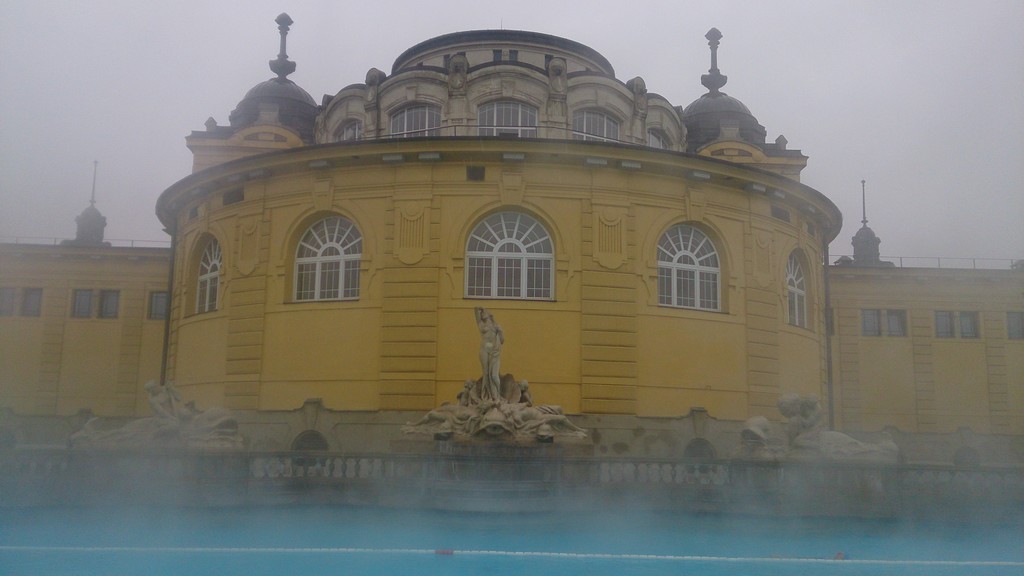
Hungary is now home to 160 public baths, of which, 50 are qualified as thermal centres; on the 9th October 2010, the "day of Hungarian bath culture" was declared - on this day, the baths offer a reduction of 50% to their entrance fee. Another event which is celebrated in the city is the "night of the baths", which is arranged twice a year and during the event, the most popular baths in the city don't close until sunrise, these are: Széchenyi, Gellért, Lukács, Rudas and Király.
The thermal bath that we chose was Széchenyi, we decided to go in the late afternoon/evening so we enjoy the bath whilst the snow fell and pierced the darkness, but when we arrived at approximately 6:00PM, we reminded ourselves that they were shutting the baths in an hour, so we decided to come back the next day to take advantage of the whole morning, since there's no time limit on how long you can stay once you've paid.
The Széchenyi bath is one of the biggest complexes of thermal baths in Europe, just like the first spa in Pest, it was built between 1909 and 1913 in a Neo-Renaissance style. The medicinal waters of the Széchenyi baths are still the second deepest well in Budapest with a depth of 1, 246 meters.
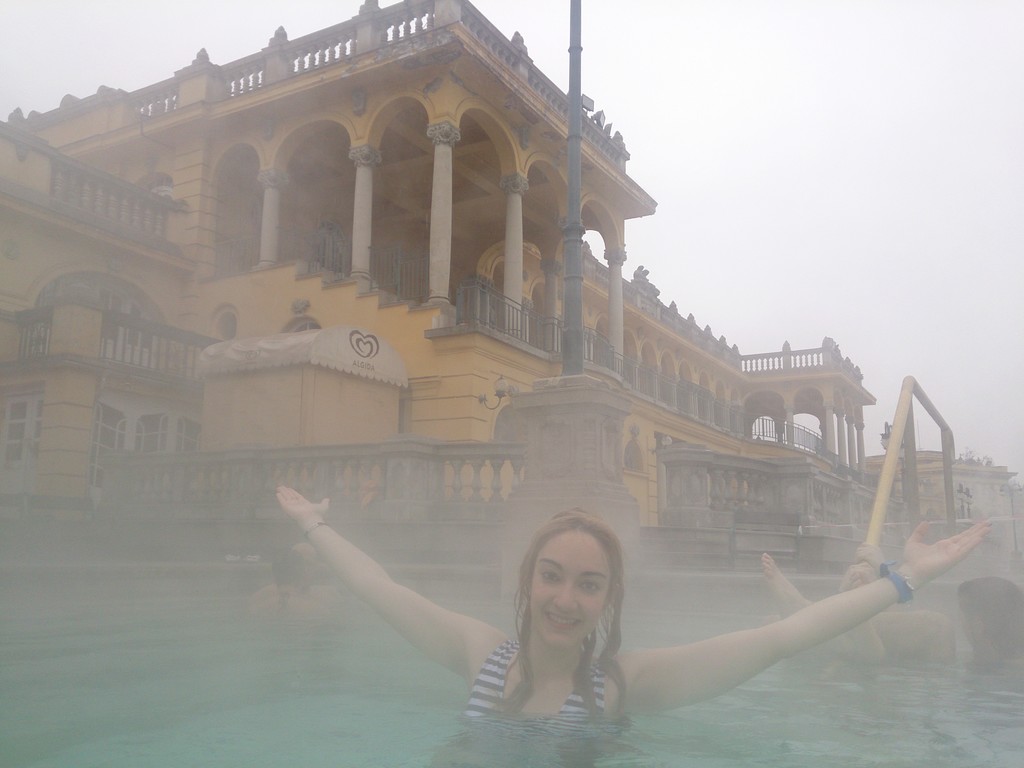
The baths include an inside pool and an outside pool with thermal waters, a swimming pool, saunas, showers, ice springs, pools with temperatures from 16ºC to 40ºC, massage jets, a vapour chamber, massages, pedicures, cellulite treatments, aqua fitness, a sun terrace, a fitness centre, restaurant and bar, security desks, swimming classes, a trip to the baths without needing to swim, a towel, swimming cap and ear plug lending service... a never ending list of services.
Also, the architecture of the complex is of a Turkish style, with yellowish tones, columns and roofs with small towers... it's fantastic to be able to rest in the external pools with all the vapour at the same time as contemplating the magnificent architecture that stands right before your eyes.
During the nights, the baths are often visited by young people whilst older people tend to go in the mornings whilst they chat or play a game of chess on the tables that are available in the baths.
The medical service has available healing thermal drinks, swimming in pools of medicinal waters, mud therapy, hydrotherapy, baths in sparkling water, medical massages, subaquatic massages, medical gymnasium, diving, complex therapies.
The therapeutic water is registered and contains calcium-magnesium bicarbonate, chloride-solfide and fluoride.
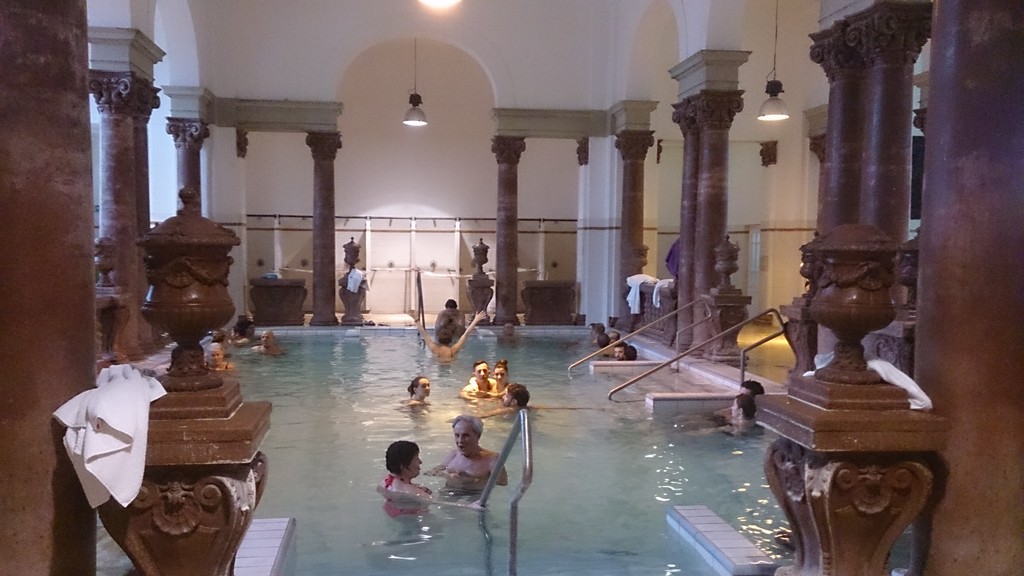
Photo gallery
Content available in other languages
- Español: Baños termales Széchenyi en Budapest
Rate and comment about this place!
Do you know Szechenyi Bath? Share your opinion about this place.























